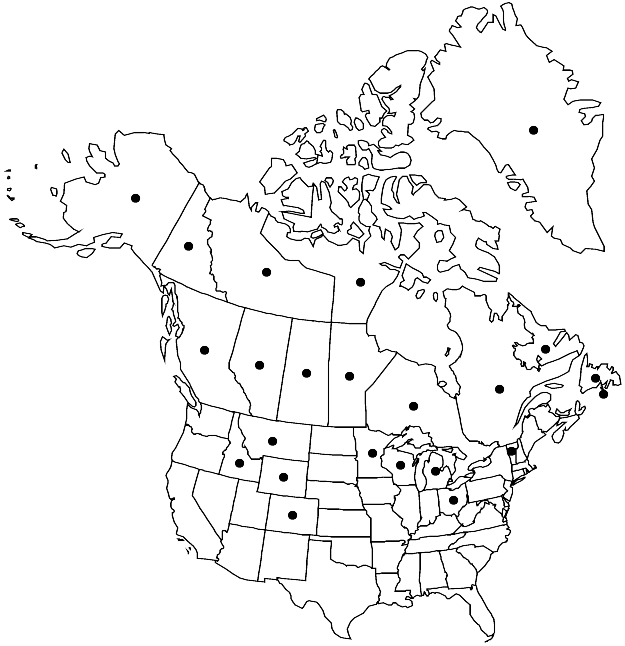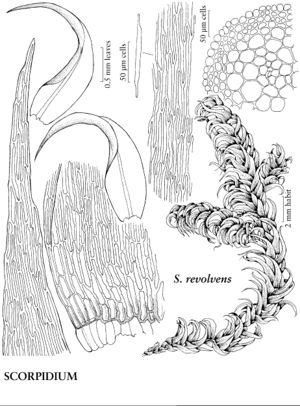Scorpidium revolvens
in A. Touw and W. V. Rubers, Nederl. Bladmoss., 380. 1989.
Plants medium-sized to large (sometimes when submerged), not turgid, green, red, purplish red, dark brownish red, or blackish red. Stems sparsely and irregularly branched or sometimes ± pinnate, shoot apices not hooked; hyalodermis well developed, complete. Stem leaves ovate or ovate-lanceolate, gradually or sometimes abruptly narrowed to apex, ± suddenly curved distally, concave, 0.5–1 mm wide; apex acuminate or long-acuminate, sometimes apiculate; costa single, ending beyond mid leaf; alar cells 2–10; medial laminal cells (shorter 1/2 of leaf) 61–140(–179) µm, cell ends short or long fusiform-narrowed, rarely rounded to almost square. Sexual condition autoicous. Capsule with exostome external surface more than 40–50% cross striolate basally.
Habitat: Mountains, intermediately mineral-rich and often spring-influenced fens, small periodically water-filled depressions, shores, submerged
Elevation: low to high elevations (0-3100 m)
Distribution

Greenland, St. Pierre and Miquelon, Alta., B.C., Man., Nfld. and Labr., N.W.T., Nunavut, Ont., Que., Sask., Yukon, Alaska, Colo., Idaho, Mich., Minn., Mont., Ohio, Vt., Wis., Wyo., South America, Eurasia, s Africa, Pacific Islands (New Zealand, Papua New Guinea), Antarctica.
Discussion
Scorpidium revolvens often has been confused with 2. S. cossonii; the differences between these species are discussed under the latter.
Selected References
None.
